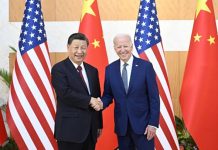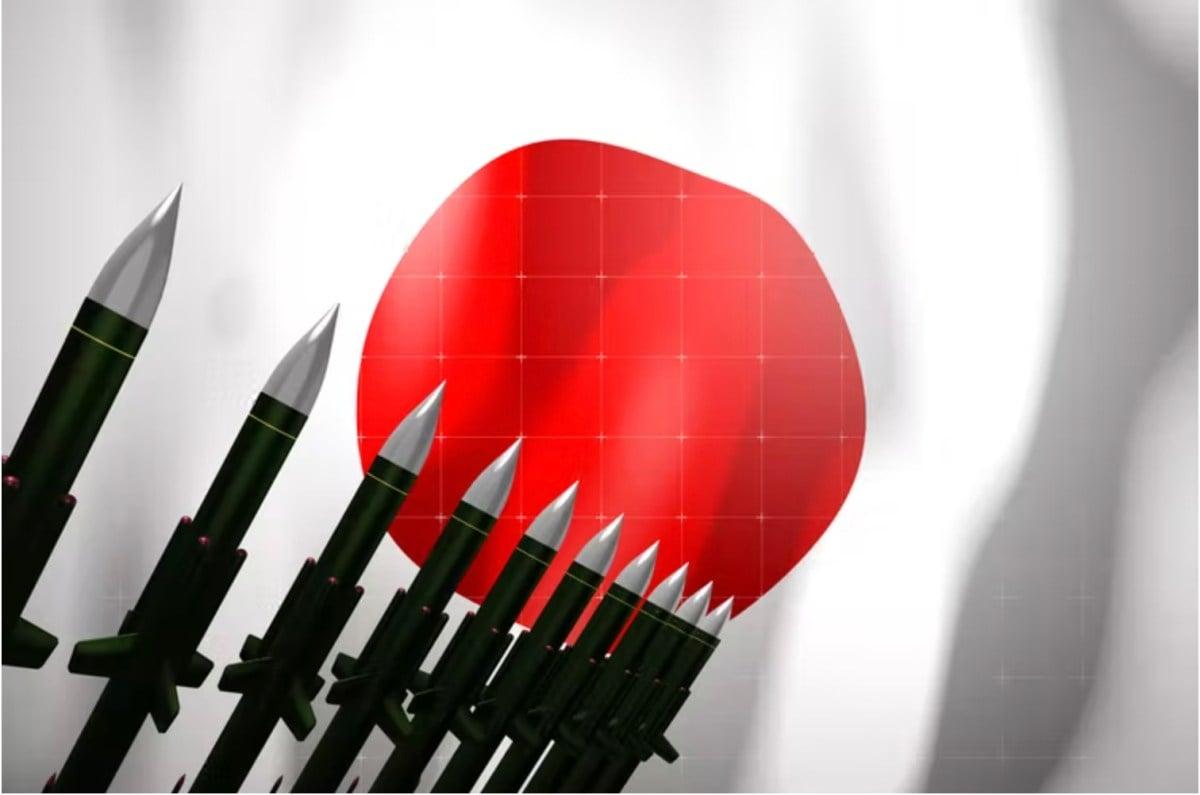
Main target is China in dangerously provocative policy that faces no visible domestic opposition in the U.S.
On December 16, Japan’s Prime Minister Fumio Kishida announced a new defense strategy that doubled Japan’s military spending by 2027. Japan further agreed to acquire offensive weapons and reshape its military command structure for its expanded armed forces.
On December 23, the draft budget was approved by Kishida’s cabinet.
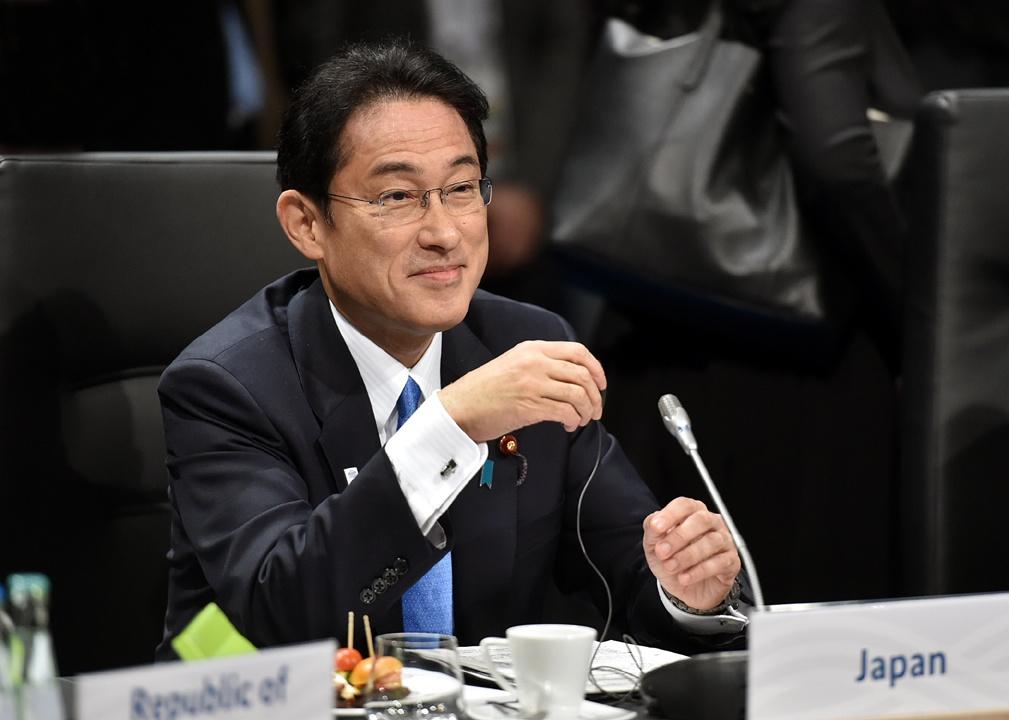
Japan’s dangerous military expansion should set off international alarm bells. This major escalation is taking place based on intense U.S. imperialist pressure. It is the next step in the “Pivot to Asia,” aimed at threatening and surrounding China and attempting to reassert U.S. dominance in the Asia Pacific.
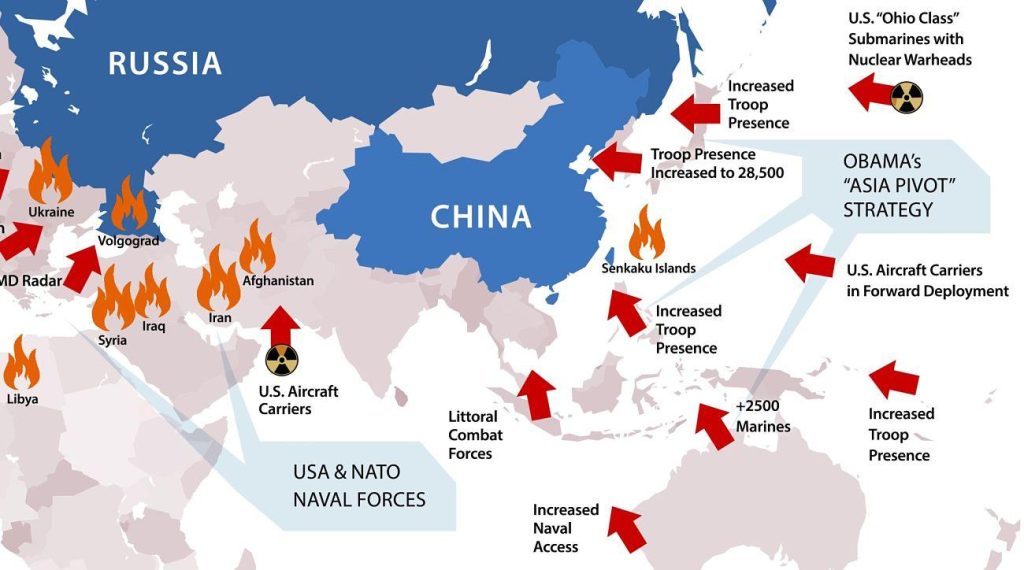
The movements opposing endless U.S. wars must begin to prepare material and draw mass attention to this ominous threat.
The plan to double military spending will add $315 billion to Japan’s defense budget over the next five years and make Japan’s military the world’s third largest, after the U.S. and China. Defense spending will escalate to 2% of gross domestic product, equal to the goal the U.S. sets for its NATO allies. Japan’s economy is the world’s third largest.
The Japanese government plans to buy up to 500 Lockheed Martin Tomahawk missiles and Joint Air-to-Surface Standoff Missiles (JASSM), procure more naval vessels and fighter aircraft, increase cyber-warfare capabilities, manufacture its own hypersonic guided missiles and produce its own advanced fighter jets, along with other weapons. The plan shifts from relying solely on missile defense to also embracing “counter strike” capabilities.
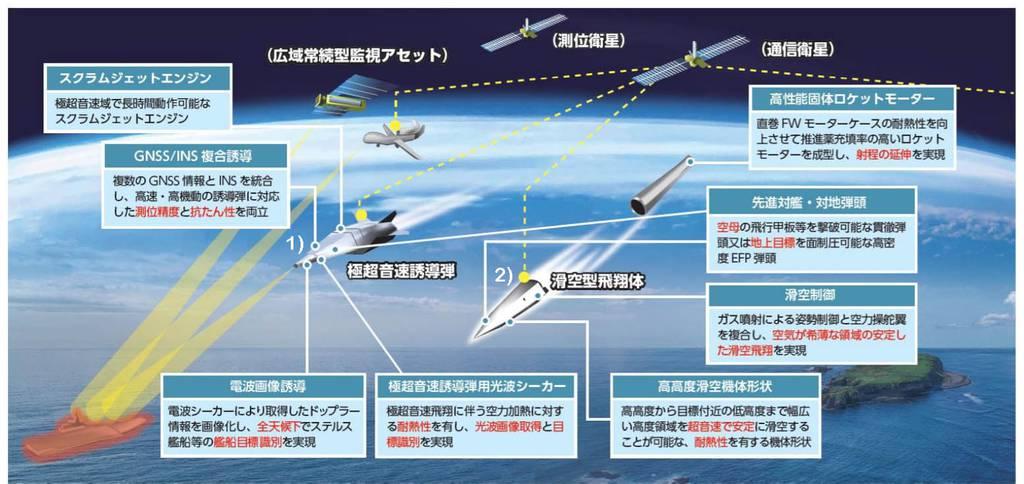
In a stinging editorial, the left-leaning Asahi, one of Japan’s largest dailies called Kishida’s plan a “radical and dangerous departure from the past,” accusing the ruling Liberal Democratic Party (LDP) of “rushing headlong into beefing up the nation’s military muscle without developing plans or taking actions to improve the environment for building peace.” The editorial also took issue with the new counter strike capabilities, saying they would “eviscerate the nation’s long established principle of sticking to a strictly defensive security policy.”

The Democratic People’s Republic of Korea (DPRK)’s foreign ministry, now led by veteran negotiator Choe Sun-hui meanwhile declared that Japan had effectively formalised “the capability for preemptive attack,” while criticizing the U.S government for “conniving and instigating Japan’s rearmament and reinvasion scheme.”
Article 9 – A Class Struggle Against Military Rearmament
Three key security documents—the National Security Strategy (NSS), as well as the National Defense Strategy (NDS) and the Defense Buildup Program (DBP)—shed some of the post-war constraints on the Japanese military.
Although the U.S. occupation force, after defeating Japan’s military in World War II, imposed a “pacifist” constitution on Japan, for decades U.S. strategists have pressured Japan’s government to aggressively rearm, to buy U.S.-made weapons, and to act as a junior partner to U.S. efforts to dominate the Asia-Pacific region.
Article 9 of the imposed Japanese constitution prohibits Japan from maintaining an army, navy and air force. To get around this, the “Japanese Self-Defense Forces” (JSDF) have since 1952 been treated as a legal extension of the police and prison system. The U.S. occupiers considered the JSDF an essential repressive tool defending capitalist property relations against the workers’ movement.
The decision for aggressive military expansion is in open violation of Japan’s supposedly pacifist constitution.
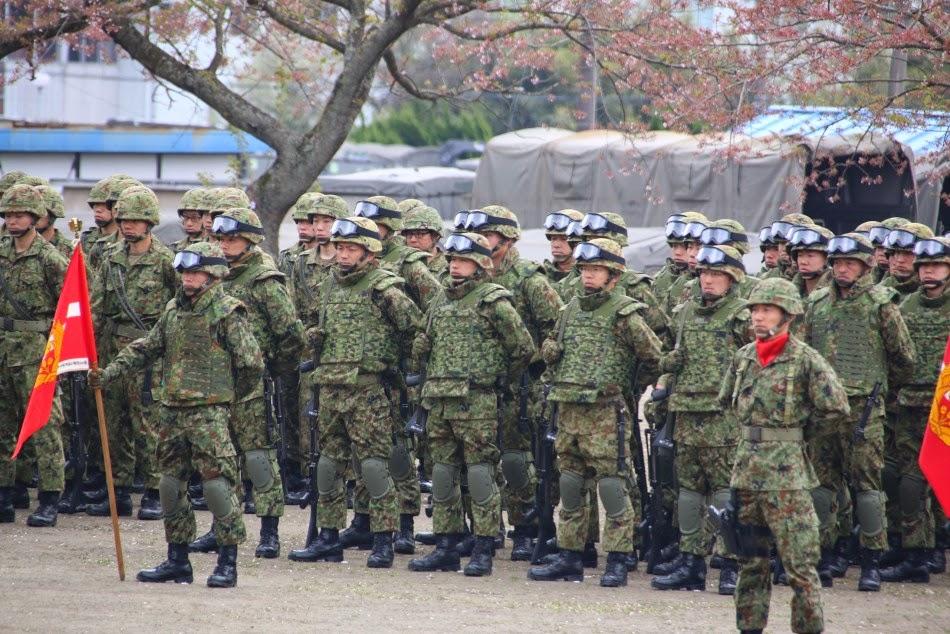
The effort to “reinterpret” Article 9 has been a continuing political struggle inside Japan. Mass rallies of hundreds of thousands have mobilized many times in defense of Article 9, which offers a clear prohibition of Japan’s maintaining a military force. The widespread opposition to the Japanese military and to constitutional change comes from working people, mobilized by the unions and the communist and socialist movements.
This movement pointed out to everyone how the wartime militarist regime of the 1930s and 1940s carried out brutal repression and led Japan into World War II. The people know from bitter experience that these ultra-rightist forces, whose roots are in historic Japanese colonialism, are the real threat to their rights and the social gains they have made.
The present doubling of the defense budget will be funded by raising taxes. A huge military budget will inevitably mean severe cuts to the country’s limited social spending.
The LDP, which has held power almost continually since the 1950s, is right-wing, pro-military and allied to U.S. imperialism, especially against China and the DPRK. They have been pushing for an end to the constitutional and legal restrictions on the country’s military.

The assassination of retired President Shinzo Abe on July 8, 2022, just two days before Japan’s election, brought additional votes to the LDP. It was able to win the two-thirds super-majority in the National Diet (Japanese Parliament) needed to move forward aggressively with its military plans.
Targeting China
Japan’s military expansion fits in with Washington’s aggression aimed at China, the DPRK and Russia. U.S. strategists’ goal is to use the U.S. alliance with Japan, South Korea and Australia, just as it uses the U.S.-led NATO alliance in Europe.
The doubling of NATO’s membership and NATO’s targeting of Russia have led to war in Ukraine, when the U.S. government imposed thousands of new sanctions against Russia, and the U.S. has ruptured the European Union’s mutually beneficial trade with Russia.
China is Japan’s largest trading partner in both imports and exports. Previous National Strategy Documents said Japan was seeking a “mutually beneficial strategic partnership” with China. Suddenly Japanese strategists started labeling China “the greatest strategic challenge in ensuring the peace and security of Japan.” (U.S. Institute of Peace, December 19)
Japan had expanded trade with Russia in gas, oil, autos and machinery. Previously Japan’s December 17, 2013, National Security Strategy document called for “enhanced ties and cooperation with Russia.” Now Japan considers Russia a “strong security concern.” (USIP, December 19)
A U.S.-Japan alliance is now defined as a “cornerstone” of Japan’s security policy. (Japan Times, December 17)
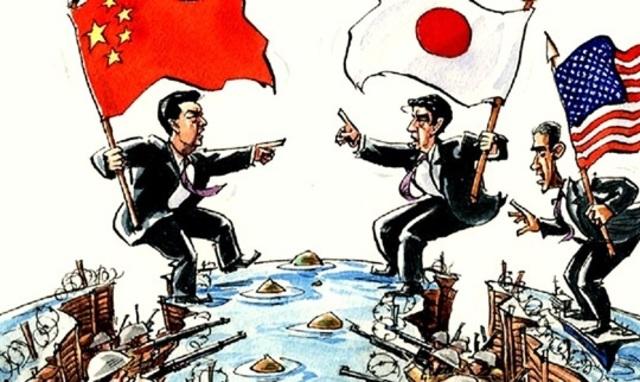
U.S. Praise of Japan’s Rising Militarism
The U.S. media praised Japan’s new security strategy document as a “bold and historic step.” U.S. National Security Adviser Jake Sullivan praised the defense spending hike, which “will strengthen and modernize the U.S.-Japan alliance.” U.S. Secretary of State Antony Blinken called Japan an “indispensable partner” and cheered that the changed security documents reshape the ability to “protect the rules-based order in the Indo-Pacific region and around the world.” (quotes, whitehouse.gov, December 16)
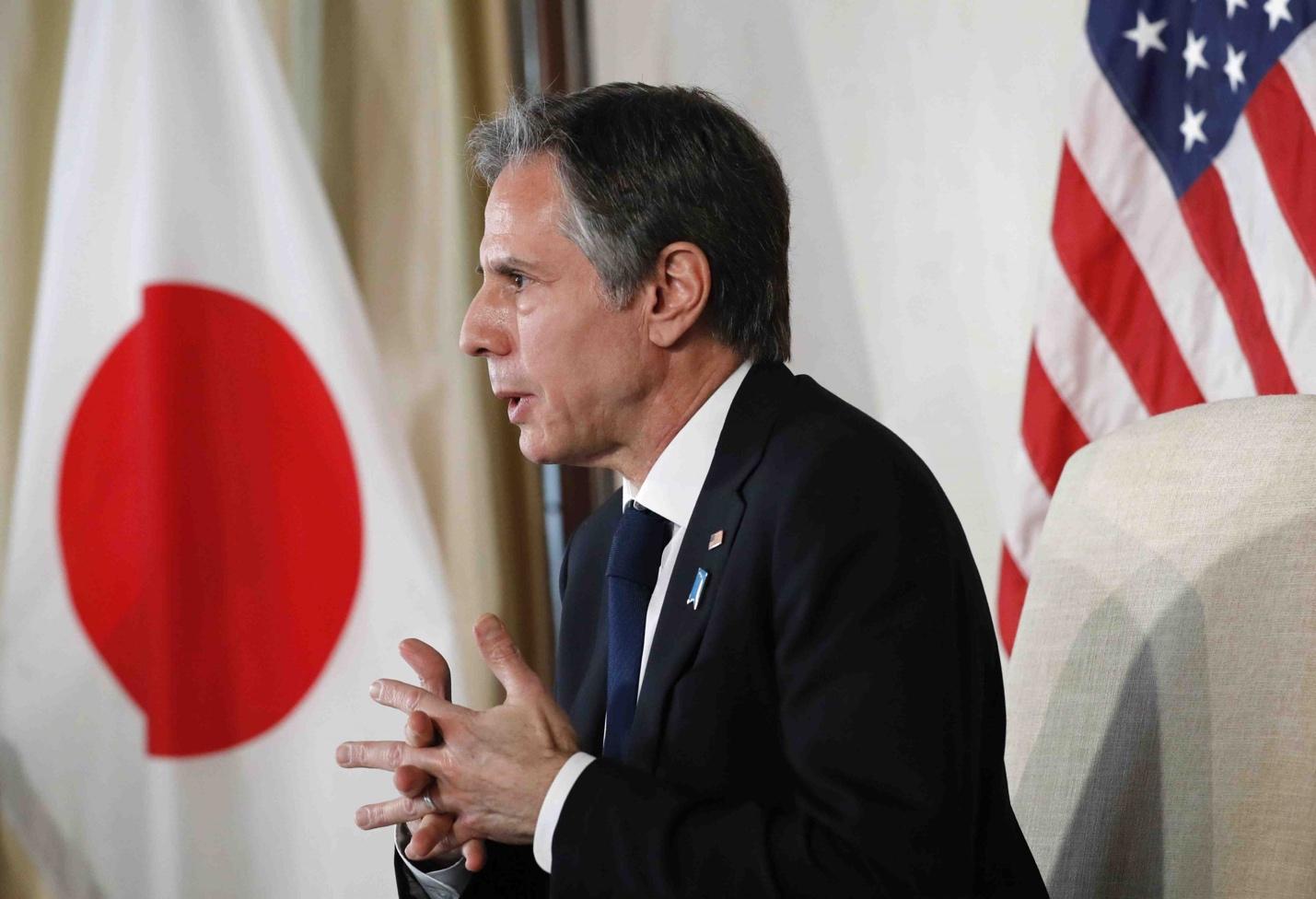
U.S. corporate power is the immediate beneficiary of this sharp turn in policy, built on military threats and economic sanctions.
Foreign Affairs magazine calls the announcement “a profound transformation,” stating that “the new national security strategy, however, represents a stunning change….[T]he government is enacting policies that have been debated for decades but were always blocked. Until now . . . Japan’s new national security strategy should be applauded.” (Foreign Affairs, December 23)
U.S. needs collaborators
U.S. policy toward the defeated capitalist class in Germany, Italy and Japan was remarkably similar. At the end of World War II, many of the industrial leaders who had backed these fascist regimes were quietly protected and rehabilitated in Japan, Germany and Italy, along with the fascist collaborators who fled from workers’ control in Eastern Europe.
The U.S. and later NATO used the rehabilitated fascists against a rising workers movement in Western Europe and against socialist construction in Eastern Europe. U.S. corporations, which had aggressively moved into the defeated Axis countries, needed insurance that their investments would be protected from the strike waves.
By 1950 the U.S. was at war on the Korean peninsula and, while using U.S. troops in Korea, needed a military force for “peacekeeping and self-defense” of capitalist property relations in Japan. Germany, Italy and Japan began to rearm during that period.
The impact on Okinawa
A chain of 150 islands called the Ryukyu Archipelago, of which the largest island is Okinawa, 400 miles from the Japanese mainland, is in reality a colony of Japan. Its population of 1.74 million people suffers from Tokyo’s rule and from the occupation by U.S. military bases. Okinawa is geographically closer to Taiwan than it is to the main islands of Japan.
Upgrading and strengthening Japanese ground units on Okinawa is part of the new National Security Strategy (NSS). Other islands, which are part of the chain southwest of Japan, will be further militarized.
Upgrading of Japan’s 15th Brigade on these islands for future electronic warfare, cyber warfare and joint operations of the ground, maritime and air forces are clearly a sign of plans to intervene in the Taiwan Strait.
In recent years, Japan has deployed anti-ship and air-defense missiles on its southwest islands of Amami Oshima, Okinawa Main Island, Miyako Island and a missile base on Ishigaki Island, the island closest to Taiwan.
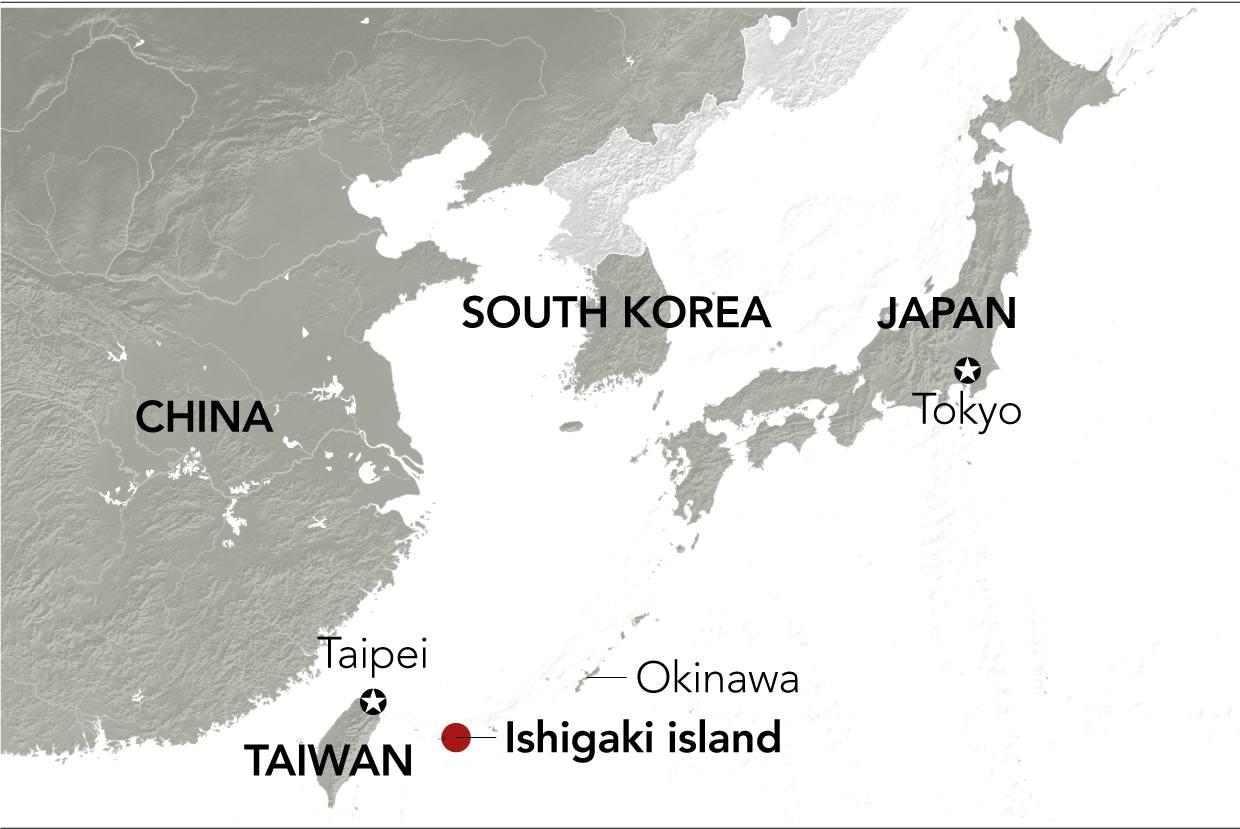
More than 50,000 U.S. troops remain as an occupying force in Japan, at present the largest U.S. occupation force in any country. More than half of U.S. troops are based on Okinawa.

Okinawa residents, the Indigenous Ryukyu people, have spent decades protesting the constant presence of the U.S. military in their daily lives. There are now 31 U.S. military installations on the island prefecture of Okinawa, which accounts for 74% of the area of all U.S. military bases in Japan, although Okinawa only constitutes 0.6% of Japanese territory.
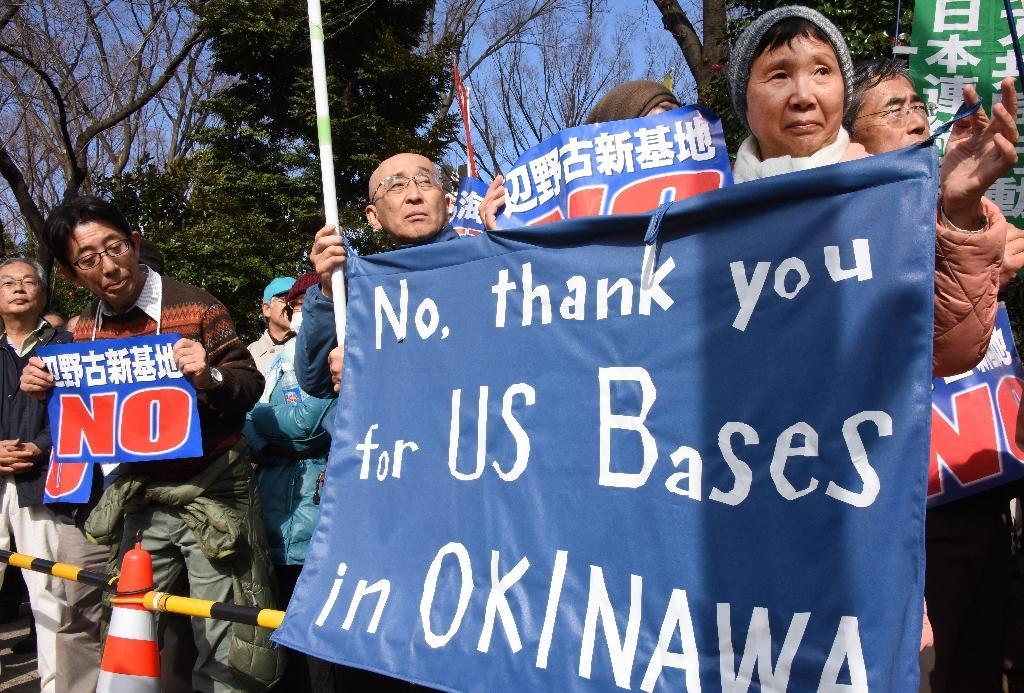
The U.S. maintains 73 military bases and 28,500 troops in South Korea. Both South Korea and Japan are forced to pay for “hosting” these troops of occupation.
“Using North Korea threat as cover”

Japan has previously justified its remilitarization by claiming North Korea is a threat. However, retired Maritime Self-Defense Force (MSDF) Admiral Tomohisa Takei told the media that China has been the main target for which Japan has been preparing, “by using North Korea’s threat as cover.” (AP, December 17)
Both Japan and South Korea engage on a regular basis in coordinated military drills under U.S. command threatening Korea DPRK. Massive demonstrations in South Korea and missiles fired from targeted North Korea respond to these military provocations.
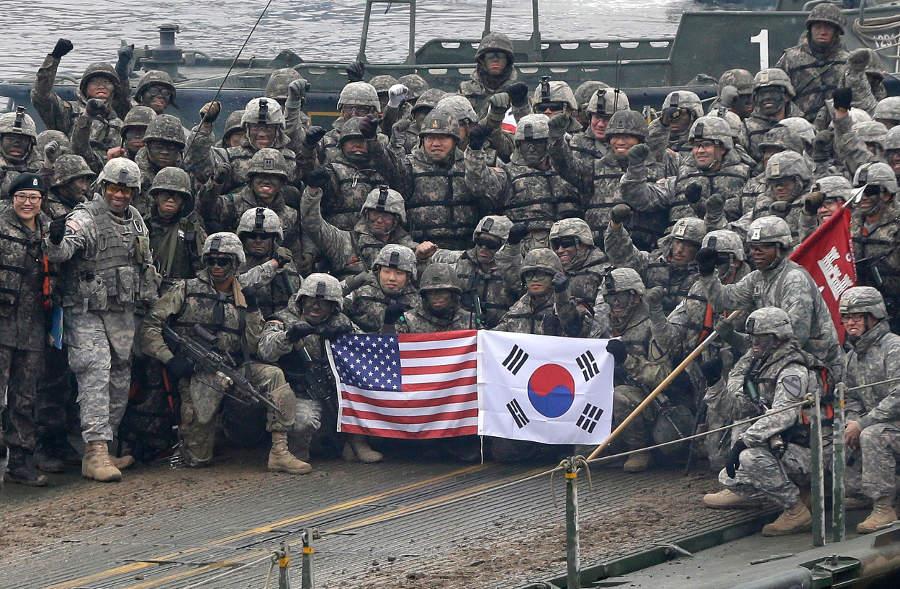
This cynical admission of the planning and preparation for war, while claiming self-defense, is similar to former German Chancellor Angela Merkel’s December 8 admission that the signing of the 2014 Minsk Agreement was not a peace treaty with Russia. Merkel confirmed that NATO wanted war from the start but needed time to prepare Ukraine militarily. (Interview in Die Zeit, December 7)
Having goaded Russia into an invasion of Ukraine in a bid to weaken and fragment Russia, the U.S. is next seeking to turn Taiwan into a military quagmire for China. The Biden administration is facilitating Taiwan’s purchase of advanced weaponry from the U.S. and greater diplomatic ties with the island.
Part of an effort to focus political attention through fact sheets, talking points, videos and webinars on the growing threat of U.S. pressure for Japan’s rearming is the short video, posted on the International Action Center website titled: “Japan’s constitutional amendment: a dangerous signal.” (tinyurl.com/mwjdt8rm)

CovertAction Magazine is made possible by subscriptions, orders and donations from readers like you.
Blow the Whistle on U.S. Imperialism
Click the whistle and donate
When you donate to CovertAction Magazine, you are supporting investigative journalism. Your contributions go directly to supporting the development, production, editing, and dissemination of the Magazine.
CovertAction Magazine does not receive corporate or government sponsorship. Yet, we hold a steadfast commitment to providing compensation for writers, editorial and technical support. Your support helps facilitate this compensation as well as increase the caliber of this work.
Please make a donation by clicking on the donate logo above and enter the amount and your credit or debit card information.
CovertAction Institute, Inc. (CAI) is a 501(c)(3) non-profit organization and your gift is tax-deductible for federal income purposes. CAI’s tax-exempt ID number is 87-2461683.
We sincerely thank you for your support.
Disclaimer: The contents of this article are the sole responsibility of the author(s). CovertAction Institute, Inc. (CAI), including its Board of Directors (BD), Editorial Board (EB), Advisory Board (AB), staff, volunteers and its projects (including CovertAction Magazine) are not responsible for any inaccurate or incorrect statement in this article. This article also does not necessarily represent the views the BD, the EB, the AB, staff, volunteers, or any members of its projects.
Differing viewpoints: CAM publishes articles with differing viewpoints in an effort to nurture vibrant debate and thoughtful critical analysis. Feel free to comment on the articles in the comment section and/or send your letters to the Editors, which we will publish in the Letters column.
Copyrighted Material: This web site may contain copyrighted material the use of which has not always been specifically authorized by the copyright owner. As a not-for-profit charitable organization incorporated in the State of New York, we are making such material available in an effort to advance the understanding of humanity’s problems and hopefully to help find solutions for those problems. We believe this constitutes a ‘fair use’ of any such copyrighted material as provided for in section 107 of the US Copyright Law. You can read more about ‘fair use’ and US Copyright Law at the Legal Information Institute of Cornell Law School.
Republishing: CovertAction Magazine (CAM) grants permission to cross-post CAM articles on not-for-profit community internet sites as long as the source is acknowledged together with a hyperlink to the original CovertAction Magazine article. Also, kindly let us know at info@CovertActionMagazine.com. For publication of CAM articles in print or other forms including commercial internet sites, contact: info@CovertActionMagazine.com.
By using this site, you agree to these terms above.
About the Author

Sara Flounders is an American political writer active in progressive and anti-war organizing since the 1960s.
She is a Contributing Editor of the Marxist Workers World newspaper as well as a principal leader of the International Action Center. Sara also works actively with the SanctionsKill Campaign and United National Antiwar Coalition.
Sara can be reached at flounders.sara16@gmail.com.

